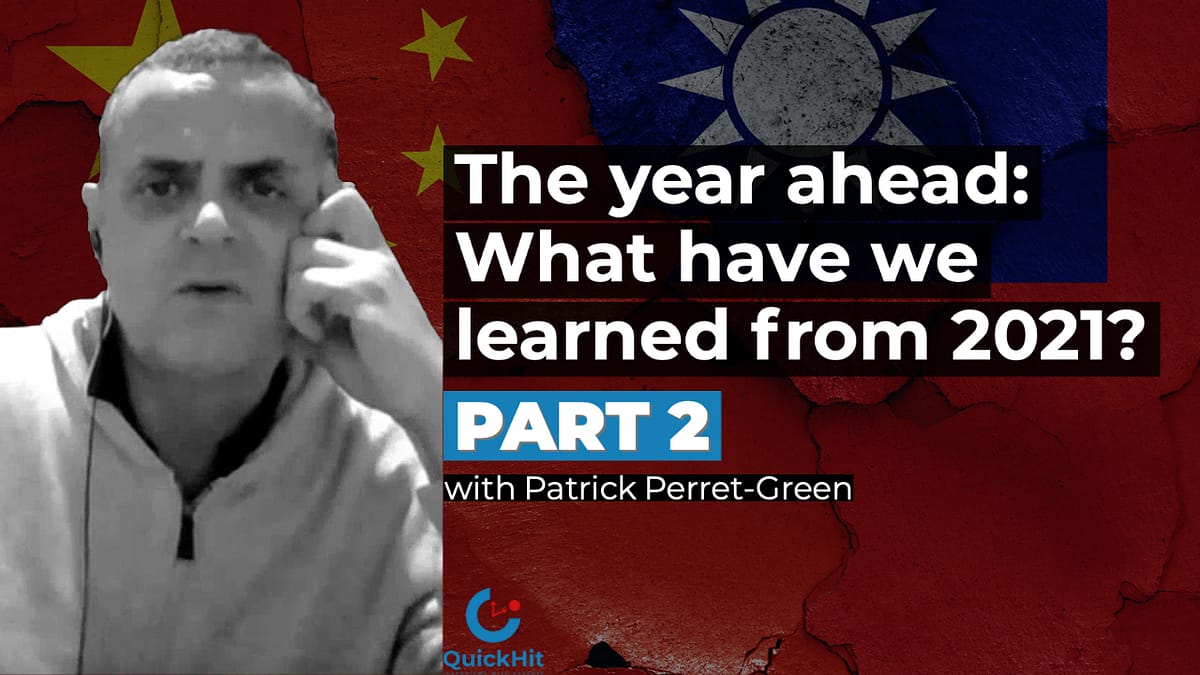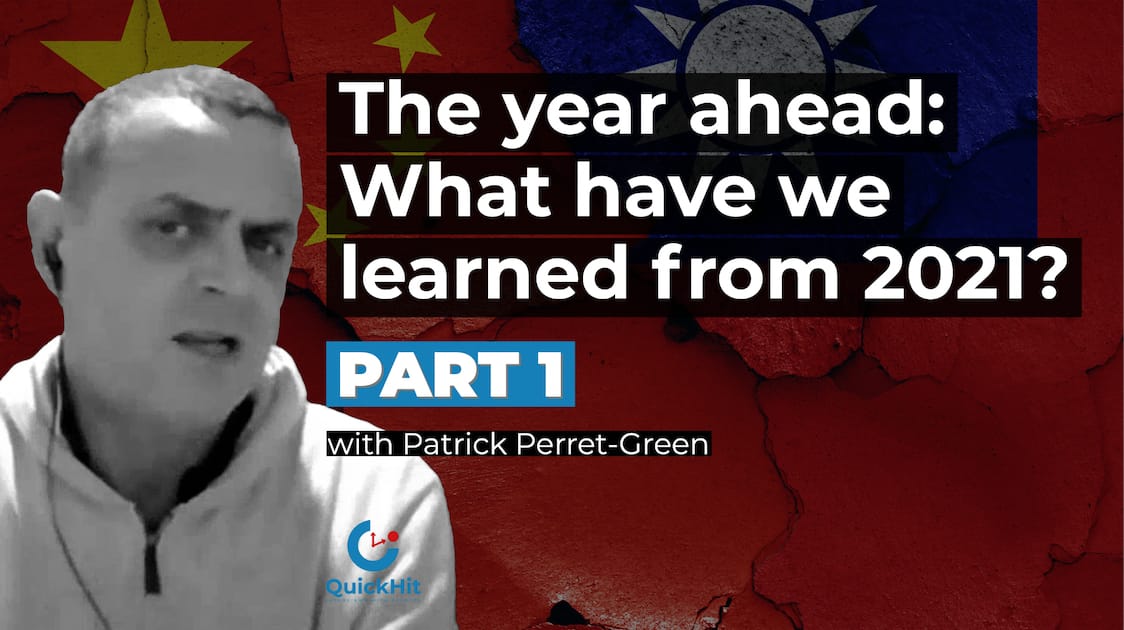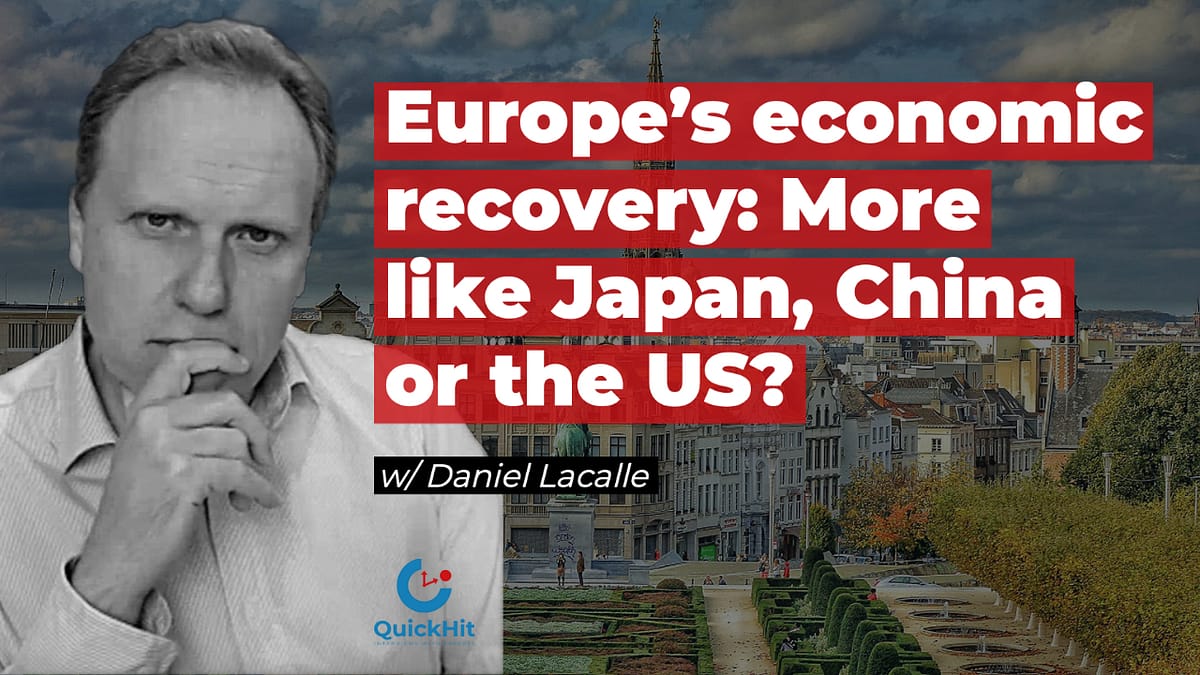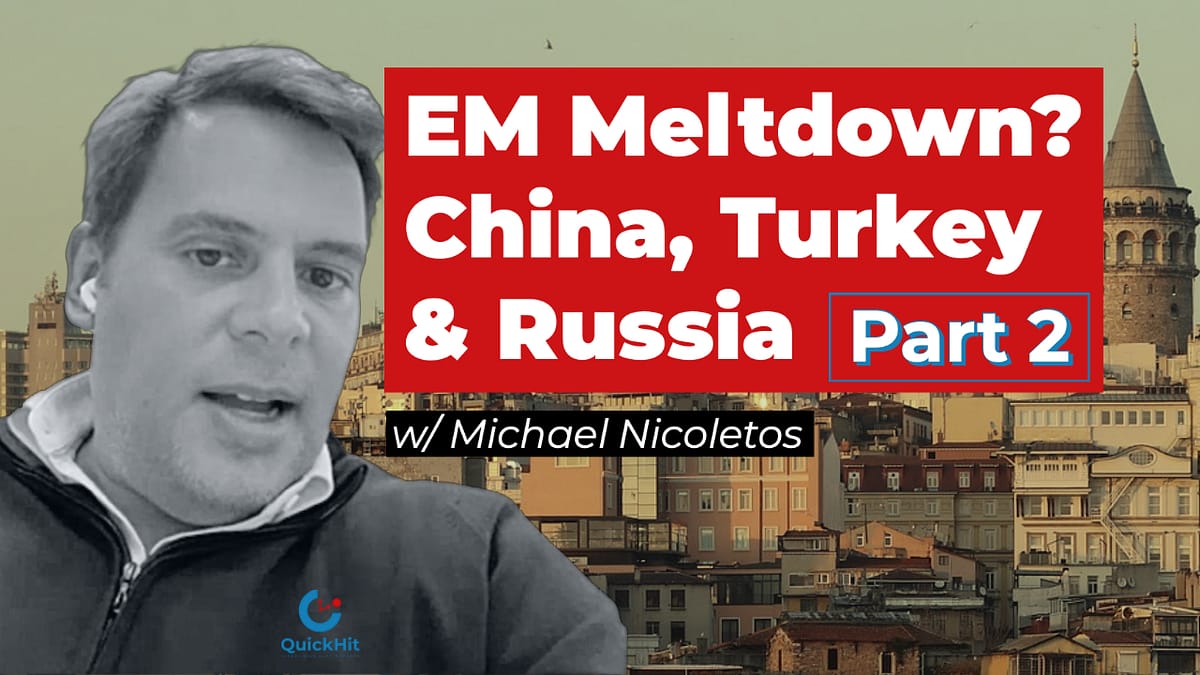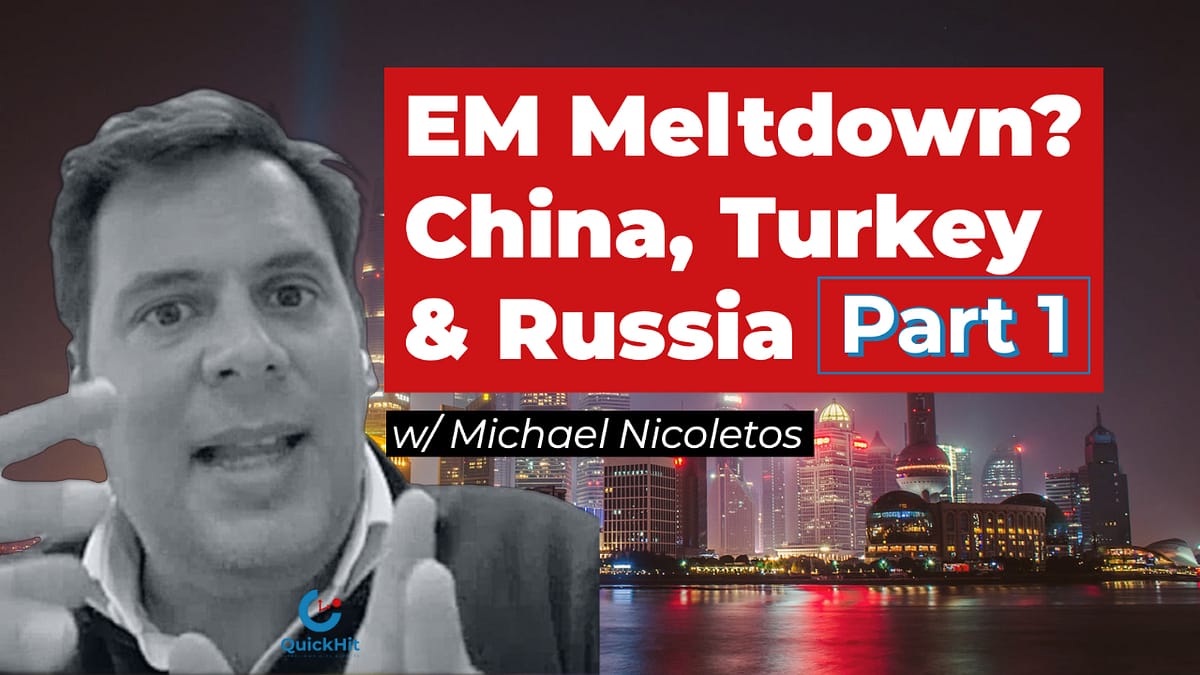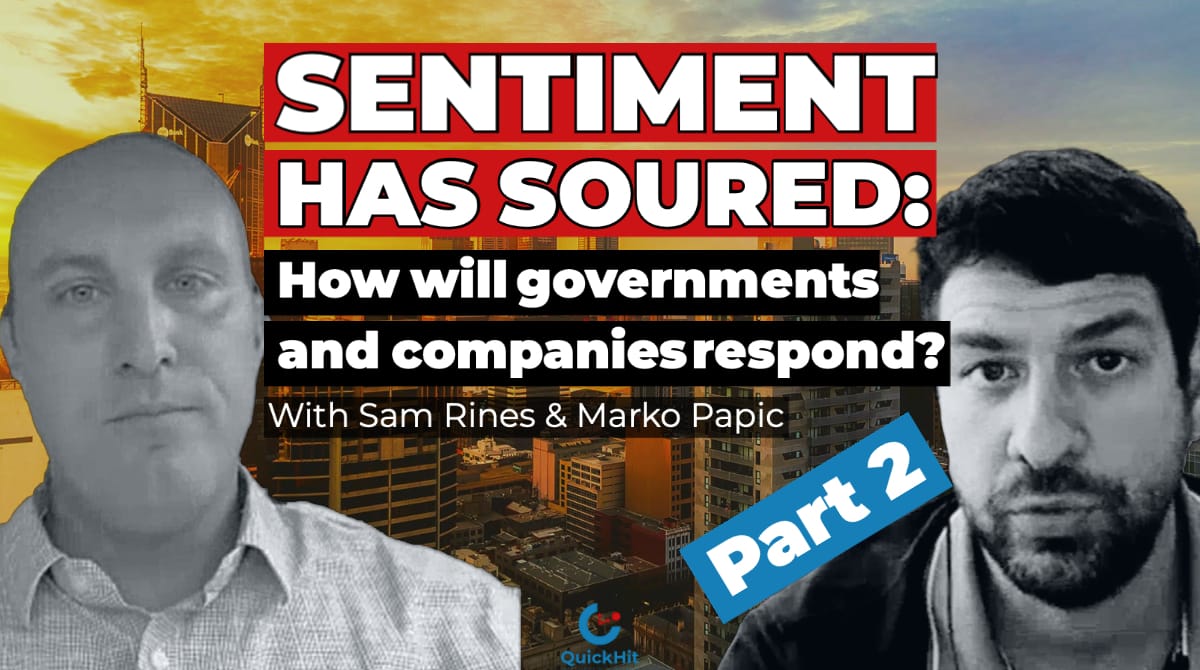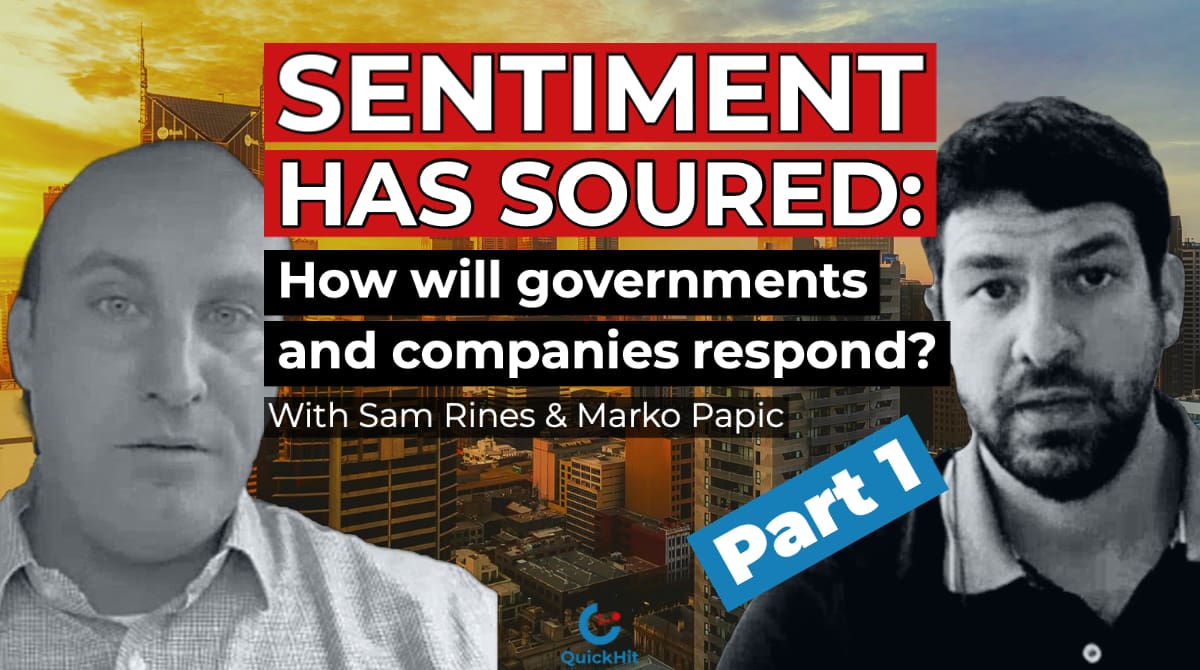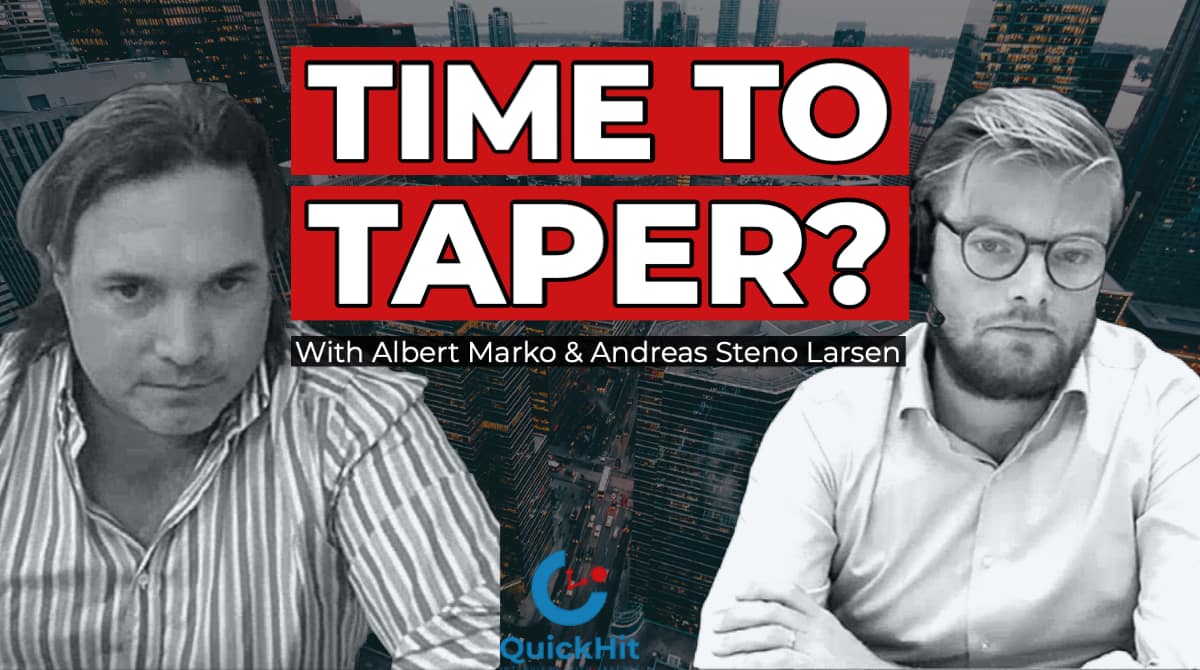Continuing the discussion with Patrick Perret-Green of PPG Macro. This second part focuses on China’s role globally and what it will look like in 2022, especially considering the real estate industry? With the US economy, why is Patrick so skeptical about it recovering and what does the stimulus have to do with that? And what about taper tantrum? Why does he believe it already happened?
Please watch Part 1 here, if you have not already.
PPG started in 1997 in research where he learned how bank balance sheets work. He also run the strategy for Citi for rates and effects in Asia and at one point worked out in Sydney. And in the past five years now, he’s been focused on the global macro environment.
📊 Forward-looking companies become more profitable with Complete Intelligence. The only fully automated and globally integrated AI platform for smarter cost and revenue planning. Book a demo here.
📈 Check out the CI Futures platform to forecast currencies, commodities, and equity indices
This QuickHit episode was recorded on December 16, 2021.
The views and opinions expressed in this The year ahead: What have we learned from 2021? (Part 2) Quickhit episode are those of the guest and do not necessarily reflect the official policy or position of Complete Intelligence. Any contents provided by our guest are of their opinion and are not intended to malign any political party, religion, ethnic group, club, organization, company, individual or anyone or anything.
Show Notes
TN: When you look at what’s happening in China domestically, with the economy and with the political structure, I’m also curious about their outward political projection. And I do worry about Northeast Asia. Not just China, but Japan, Korea. And I’m curious, since you have such a historical background, I’m curious what you think about China in terms of political projection, say for 2022. Are you worried that they’re going to become aggressive in ’22?
PPG: Not ’22. You’ve got enough crap on your own doorstep at home without exacerbating the situation. And if you actually look through what’s going on, well, you can read what the Global Times says and things like the Wegar bill is clearly going to cause some short term aggravation. But overall, my sense is over the past few months, we’ve had a more of a nuanced approach that we need to just tone it down a bit, just dampen down the Wolf Warriors a little bit.
TN: They’re getting it.
PPG: You know what I mean? Down the line, ultimately. Clearly, Japan is arming significantly. Australia. We’ve got the whole quad or whatever you want to call it.
TN: Right.
PPG: One of the biggest problems, of course, has been the abject failure of US foreign policy over the past 20 years. So apart from Gulf War 2, worst disastrous war in history ever when we look at the consequences. Then the GFC.
So everyone they’re all focused on various different things. China’s love the vacuum and it’s been able to get away with loads of stuff, And Biden’s foreign policy towards China is not just China, obviously, but other places abject. Much as it irritates, so over here, I told people people, they love ranting about Trump.
Well, presentationally, he was awful. Foreign policy actually was the best foreign policy that came from the US in decades. Well, okay, assisted by people calling the establishment as well.
TN: But. The difference there is it was outcomes based foreign policy. Right. And I think what Americans have forgotten, particularly over the last 30 years, is it’s really been input space, foreign policy, values and other stuff, which is great. But we had, I think, through the probably 50s, a very pragmatic output based foreign policy. What are the outcomes? That’s the objective. And diplomacy school, my graduate work was in diplomacy, they’ve really focused on the other side of the equation with a fuzzy idea of the outcomes.
And I think what Trump brought, like him or hate him, what he brought was a focus on, a dogged focus on the outcomes of foreign policy. Right. A lot of people hate him. That’s fine. But it was a very pragmatic foreign policy environment in the US.
PPG: Yeah, going forward. And I think there’s a legacy of that now. The one thing the Congress, the only bypass is an issue on the hill is China. And Trump didn’t give a damn about human rights in Uighurs or Hong Kong. They veto proof majorities that he wasn’t going to go through the humiliation of being having a veto overturned. So he just had to roll with it. It actually was more of an inconvenience for him, I think. And then he’s people like Pompeo and military as well.
Overall, I think China, going back to the South China Morning Post article. They were saying that China could hit 5% growth with all the stimulus. Now, if you look at what will GDP activities now and the fixed asset investment. This year, forget about the year-on-year number because that’s the source, but it’s only grown. So I go through the data. I do a lot of data mining. I’m not particularly quantitative. I just sit there with some excel one plus times that times that times that.
TN: Sure.
PPG: Well, there’s only growth nominal terms, 1.6% year to date.
TN: Right. That’s a developed economy number. That’s not a growth economy number.
PPG: That’s a nominal number. Don’t forget. So given the fixed active effort uses lots of steel and cement and commodities which have all gone up in price. Actually, that number is a big fat, real negative. That’s sort of 49 year to date. I think the MBS came out year to date, that’s 49 trillion CNY. So pretty much still out there. That good 4 to 5% of GDP. Retail sales are only up 3.9%. That allows CPI at 1.6%. Either number is still like the lowest on record outside of the immediate pandemic shutdown.
So you sort of wonder where on Earth they come up with their growth numbers for the year? And for it, they’ve got a bit of boost to their exports from the trade surplus and a lack of collapse in tourism because Chinese is a big tourist. So the current account is being boosted. So that flatters the GDP. But even the Chinese next year expect net exports to come down. And if I’m right about the durable goods argument, then that’s even worse for the Chinese trade surface.
TN: Sure. I think you’re right.
PPG: So you’re left with what can they do?
TN: Can I ask you also something because you mentioned retail sales and consumer goods. I’m curious. With all of the real estate woes in China, how much of consumer debt in China is secured by real estate assets? Is that an issue? And how much of a crimp will that put on consumer spending?
PPG: That’s a tough one, because we know overall, the LTVs are very low. But we also know there’s 50 to 60 million vacant apartments. Chinese have a surreal concept about owning. They count as an investment property.
And if you rent it out, it sort of loses its original status. For what’s the description. But the problem is if you’re introducing these property taxes and you’re going in like that, well, then you are seeing second hand homes. I mean, the official home numbers are nonsense when we know full well that developers are sending stuff at big deep discounts.
TN: Right.
PPG: But by large, I think Chinese will just, it will affect sentiment. And some people are highly leveraged. So there are. Personal bankruptcy is still an infant industry in China. It’s not really established in the courts.
TN: There’s so much around it. It’s terrible.
PPG: It clearly is already dampening consumer confidence. And if the real estate is slowing in production, so we know that new sites, new land sales collapse. So that tells you going forward over the next two years, new construction activity is going to be much reduced. And if you’re not building homes, then you’re not going to be filling them with washing machines.
TN: Right.
PPG: I was actually looking at I think it was a big lift manufacturers like Otis and stuff like that. And you’re just going like, you look at the stock price and I think they’re up there and you’re going, like, well, Chinese real estate can’t go down there. You’re just thinking like, yeah, I mean, I basically have a big aversion to anything related or household good related book stock, but I’m not an equity man. I’m a bond man through and through. That’s what I do.
TN: It all makes sense. The logic is there. And given the direction we’re headed, all of this makes a huge amount of sense, especially for kind of ’22. I think 21 a lot of it’s behind us. And there are a lot of questions and a lot of I think, still skepticism around what we’ve heard globally in ’21 about the impact of spending and monetary policy.
But, Patrick, if you don’t mind, you had mentioned US foreign policy. So let’s focus on the US for a minute. And with the midterm elections in the US, and you seem to be skeptical about kind of positive momentum in the US economy, I’m really curious what your view on the US is for the year ahead?
PPG: Well, we got two things. One, we’ve got a big fiscal contraction. We shouldn’t underestimate how much the fiscal expansion has flattered the US economy because it was so large and that’s clearly massively in reverse.
One of the things, I don’t know the exact details of it, but something that US equity analyst convenience to ignore when it comes to earnings is if I ask the question, well, don’t you think 800 billion of PPP loans might have flattered your fingers as a whole? All the other loans to Airlines or stuff like that? US Airlines basically got extremely generously treated. UK Airlines haven’t. Like VA or Virgin Aircraft.
TN: All Americans are really unhappy about all the money the airlines got because the quality of service is terrible.
PPG: Yes. But, for example, the distortions, it’s really like they’re still echoing through. Like, I was talking about the monetary stimulus. It takes longer to pass through the economy. What’s the analogy? It’s like a python eating an elephant.
TN: Right.
PPG: It just takes longer to digest.
TN: Right.
PPG: Probably, extreme example. You get the point. When we look at all the fiscal front, we know that’s much less the hope for fiscal stimulus if you think where we were at the beginning of this year and everyone was going, oh, wow. It’s great. Biden’s going to push so much through. Well, we only just got the infrastructure bill through.
TN: Underwhelming infrastructure bill.
PPG: Yeah. And Build Back Better is still not through. And the fact the centrist Democrats are resisting not just Manchin, but overall, there’s much more of a realization that just look at Biden’s approval role. But the good thing is it’s supposed to be damping down the progressive, different word for them.
And then clearly Virginia shot the dams. And it’s basically long standing. Congresspeople are retiring in record numbers because they don’t want to have the humiliation of losing their district coming up. So let’s presume that the form book is correct. That basically Republicans probably take both houses. Certainly the House. Well, that stymies everything.
The administration has got a window doing stuff, plus dealing with inflation and stuff like that. And it’s always like, well, now you’ve got the administration going, well, we want to do this. But actually, Holy shit, the inflation has got out of control. We need the Fed to come in. And lo and behold, the Fed has just had, we’ve had a big move in short term rates pricing to the point when you’ve got 60 basis point increase in the dots, which we’ve never had before.
And if you said to someone a year ago, what do you think would happen if 60 basis points was added to the dots? Between what quarter? They say the dollar would surge. The curve was flattened. In fact, what we’re seeing is because so much is priced in that the curve is steepening and the dollar is softening. But there are other elements going on there as well.
And if the US economy in the great, you know, between the greatest economy ever couldn’t handle rates going back to two and a half percent and a minor reduction in the size of the balance sheets. And my view was that Fed should have probably stopped at one and three quarters rather than two and a half at most, because they forgot about the lags that they keep on telling us about. That the idea of the US economy with so much more debt, normally, it’s gone from 240%, 250% of GDP to 275 now.
TN: Right.
PPG: Basically, we’ll bring that down a little bit. But it’s gone up by 10% share GDP. So how sensitive is the US economy going to be to 150 basis points? Certainly. This is what the Fed is talking about now, by the end of 2023. Another 50 in ’24 plus balance sheet reduction as well. I just can’t see it getting there. So I’m skeptic that we’ll necessarily see Fed funds getting back to 1%.
TN: Two years is a long time.
PPG: Two years is a long time.
TN: I think, in general terms what I’m seeing. And I’m not sure if this is what you’re saying, but for the past two years, we’ve seen a private sector that’s been fixated on the public sector. Meaning the Covid regulations, the Covid stimulus, all this stuff. And it seems to me that with that stimulus disappearing and with the chaos in DC and at the state level, private sector will start focusing on the private sector and their customers instead of government. Does that sound fair?
PPG: Yeah. Although let’s not be too nice on the private sector. There’s large parts of the private sector that clearly gouged. The interesting one is, of course, global shipping. So if global shipping really disrupted and the costs have really gone up so much, how come is it that people like mask have made more money in the past year than they’ve made in the past 15 years combined? Because it’s clearly capitalized. Oligopoly is going on there, and they are gouging people. That will fade over time.
My biggest concern is actually what is the risk of a demand shock? So the Fed starts draining liquidity and we forget just how sensitive the US and the global economy is to the flow of the US money. And I think it’s the flows that is the thing. So it’s this whole point about there’s a sort of delicate tipping point in terms of if you think about it. I’m a big one for analogies. It’s been like an artery. How low does the blood flow have to get before you faint?
TN: So you’re saying that the flow will stop, but the stock will remain. Are they going to start selling off those balance sheet assets?
PPG: The Fed at some point. Sorry, the Fed.
TN: But not in ’22?
PPG: No, but I think they’ll see. But clearly the fact that they were already talking about this in terms of let’s reduce assets that. Well, fine. If we do the 75 basis points, we’re not going to wait until we get to one and a half, or as it did last time around. We’ll probably start reducing the balance sheet earlier because it’s a nice little tool. And actually, it’s quite a good tool if you want to crumble down on mortgages.
So what was noticeable in the last Redux was because the Fed was buying such a large share of them pretty much 100% of all mortgage where I stopped buying 100% all treasury issuance. But once they started reducing the mortgages, that was when mortgage spreads versus the 30 year mortgage versus the loan bonds actually really started to widen out.
TN: Right.
PPG: And then that mortgages are really the underlying credit of the credit market.
TN: Of course.
PPG: So everyone knows all the Treasuries, actually. And I think mortgages are a better reference than OAS or something. I’d rather look at a mortgage than bond against credit, and that filters through to the whole credit market. I’m never left with a situation where you have record shares of US business debt. If you look at the flow of funds reports, US business debt is a record share of GDP.
So I love the bullshit we get from the corporate. So again, the equity analysts who basically, I think should just should not be left in a room with any hard surfaces. So they go out and they say, oh, yeah, we got record amounts of cash on the balance sheet. So you had I think it was Viacom back, Wall Street Journal normal. Sort of. Yeah, on the corporate sector. Wonderful. Viacom CFO going, oh, yeah. We’ve got like 10.7 billion of liquid assets on a balance sheet. At the same time, Conveniently forget to mention that they had 170 billion of debt. Right? You don’t have any billion of debt. Things go wrong. Your ten or billion doesn’t go that far.
TN: I’ve heard over the past few months as talk of tapering has intensified. And I bring up the taper tantrum to people from 2015, and there seems to be a resistance that we’ll have a taper tantrum this time. And I kind of find that a little bit rose-tinted. There has to be a backlash.
PPG: Well, I think we’ve already had it. Quite honestly. I think we’ve already had it. If we look at some of the moves, if you’re a rate trader and you specialize in rates, we had some big swings. Look at the curve. So 530s in the bond curve before the tipping point was the minutes from the April meeting. So Powell being going on about we might be talking about paper. And then actually the minutes come out and said some participants said it’s time to maybe start discussing taper. And then the 530 was at 155. We’ve been down to 55 now. A 100 basis points with a big long. So there’s been a sort of subtle taper.
I also think you have to go back to the psychology of 2013, really, when we had the taper tantrum when rates exploded. We were still very much in a mindset. And central bankers were, too that we revert to normal, that rates would revert to where their previous level was. And it’s the educational experience. You think about all those Fed objections, all their dot points, and it took them to the the end of 2015 to do the first 25 basis point hike. It took them another year to do the second 25 basis point hike.
So I think we’re scarred by experience now. So there’s not the taper tantrum as of such at the same time, equities. It’s all fine, but they don’t realize how sensitive the economy is to the marginal changes in money.
TN: Very good. Patrick, thanks so much for your time. This is really a level of depth that I think everyone will appreciate. And I think the views are fascinating because it’s view of ’22 that I don’t think they’ll get anywhere else. So thank you very much for your time and just wish you all the best for ’22.
PPG: Yeah. Thank you. Happy Christmas. Happy holidays. And you have politically correct happy.
TN: Thank you, Sir.

